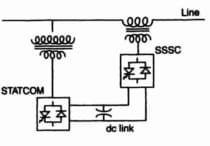1. What is a food chain?
a. A long chain made of food
b. Process of preparing food
c. Food where locked by chain
d.
Pathway that energy and nutrients flow through the ecosystem
2. Why organisms in food chains are grouped into categories?
a. To form community
b. To share the energy
c. To form trophic levels
d. To get more energy
3. What role human plays in food chains?
a. Producers
b. Consumers
c. Humans do not involve in food chains
d. Decomposers
4. Why do all food chains start with plants?
a. Because plants are easily grown
b. Because plants are nutritious
c. Because plants can produce its own energy
d. Because plants do not require energy
5. How many types of ecological models are there?
a. One
b. Three
c. Two
d. Four
6. Food chains are often used in ecological modeling.
a. True
b. False
7. Which of the following food chain correctly describes the flow of energy in an ecosystem?
a. Grass->lion->human
b. Cow->grass->lion
c. Grass->goat->human
d. Leaf->bird->lizard
8. Which of the following condition is true about food chain?
a.Provide more energy for next trophic level
b. Provides food for succeeding organisms
c. Consume energy from next trophic level
d. Do not pass energy to next trophic level
9. Carrot->rabbit->fox is an example of_______________________
a. Food web
b. Food chain
c. Food cycle
d. Food round
10. Which of the following factor diminishing as food chain proceeds?
a. Pressure
b. Energy
c. Nutrition
d. Temperature
11. Which of the following organisms begins marine food chains?
a. Phytoplankton
b. Fishes
c. Zooplankton
d. Corals
12. We can find a marine ecosystem on a beach shore.
a. True
b. False
13. Ecosystem may be defined as____________
a. A species along with environment
b. Plants found in water
c. Plants found on land
d. Call plants and animals species along with environment
14. A pond / lake is
a. A biome
b. Unnatural ecosystem
c. An artificial ecosystem
d. Community of plants and animals only
15. Biome is
a. The fauna of an ocean
b. The Flora of land
c. Communities of organisms interacting with one another
d. The part of the earth and its atmosphere which is inhabited by living organisms
16. Total organic matter present in an ecosystem is called
a. Biomass
b. Biome
c. Litter
d. Food
17. The most important organisms for an ecosystem are
a. Herbivorous
b. Carnivorous
c. Green plants
d. Protozoa
18. A food chain consists of
a. Producers
b. Consumers
c. Decomposers
d. Producers and Consumers
19. Food chain always starts with
a. Photosynthesis
b. Respiration
c. Nitrogen fixation
d. Decay
20. Converters or transducers organisms in the food chain are called
a. Herbivorous
b. Carnivorous
c. Decomposers
d. Producers
21.
a. Producers
b. Producers and consumers
c. Decomposers
d. Producers consumers and decomposers
22. Energy flow in an ecosystem is
a. Uni directional
b. Bidirectional
c. Multidirectional
d. All the above
23. Food web_______________
a. Increases variety of food at each trophic level
b. Delicately balances the inter relations amongst organisms
c. Decreases variety of food but increases quantity of food at each trophic level
d. Increases variety as well as quantity of food at each trophic level
24. _________is the study of the interactions of organisms with each other and with the physical environment.
a. Anthropolgy
b. Ethology
c. Environmentalism
d. Ecology
e. Ecosystemology
25. A/An _________ is defined as all the organisms within an area belonging to the same species.
a. Ecosystem
b. Biosphere
c. Population
d. Community
- MCQs on EVM (Environment Management) Page 1
- MCQs on EVM(Environment Management) Page 2
- MCQs on EVM(Environment Management) Page 4
- MCQs on EVM(Environment Management) Page 5
- MCQs on EVM(Environment Management) Page 6





0 Comments
If you have any doubt, feel free to ask.